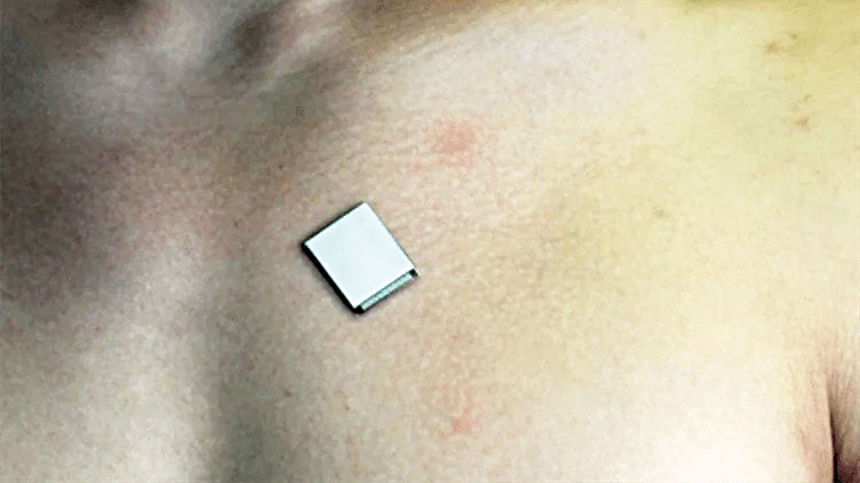Wearable cardiac ultrasound device allows measurements during stress testing

Increasingly, the miniaturisation of electronic technology allows tiny microsensors attached to the skin to take continuous physiological measurements — heart rate, oxygen saturation, and even blood pressure.
Now, researchers describe a thin (8 μm), stretchable strip of sensors that can be applied to the chest to obtain continuous cardiac ultrasound images — in multiple orientations — that are equivalent to those produced by current commercial ultrasound. The device sends data to a computer which generates real-time estimates of stroke volume, cardiac output, ejection fraction, wall-motion abnormalities, and chamber size; these estimates compare favourably to those of current ultrasound devices.
The principal utility of the device is that it can obtain ultrasound images not only before and after, but also during, cardiac exercise stress testing. This concurrent collection avoids false negative results that can occur when pathological changes generated by exercise have returned to normal by the time the postexercise images are obtained.
More experience with this remarkable technology will be required to determine its clinical value during exercise testing, its potential for ambulatory monitoring, and its possible role in evaluating other conditions such as aortic aneurysms or pleural effusions that threaten to expand. It represents another potentially important step in real-time physiological monitoring and another example of the increasingly important marriage of bioengineering and medicine.

 For all latest news, follow The Daily Star's Google News channel.
For all latest news, follow The Daily Star's Google News channel. 



Comments